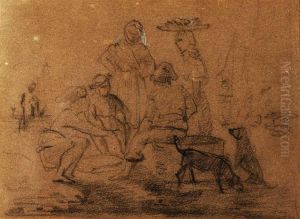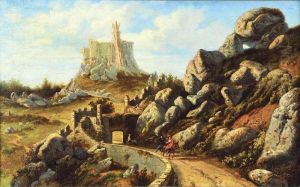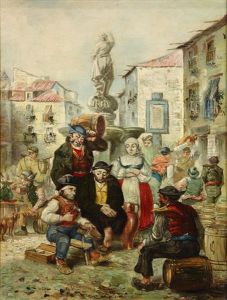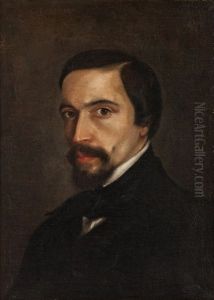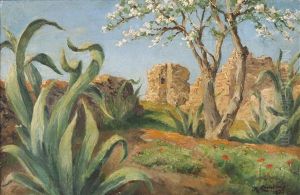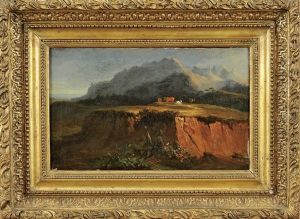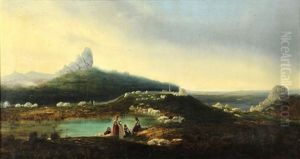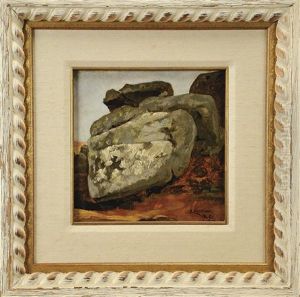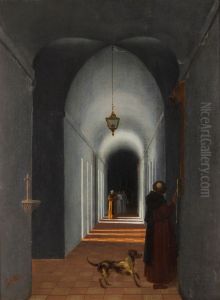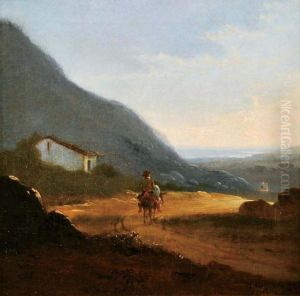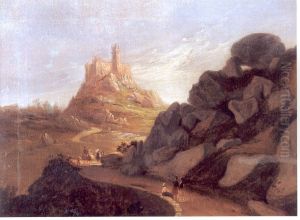Joao Cristino Da Silva Paintings
João Cristino da Silva was a significant Portuguese painter born on June 18, 1829, in Lisbon, Portugal. He was one of the most prominent artists of the Portuguese Romantic movement, although his work also showed traits of the nascent Naturalist trend. His oeuvre is noted for its historical and landscape paintings, which were characterized by their detailed observation of nature, sensitivity to light, and a certain poetic atmosphere.
Cristino da Silva's artistic talent became evident early on, and he began his formal training at the Academy of Fine Arts in Lisbon. He was a skillful student and received a scholarship to study in Rome, which was a pivotal experience for his artistic development. In Rome, he was exposed to the works of the old masters and the contemporary Italian art scene, both of which influenced his style and techniques.
Upon returning to Portugal, Cristino da Silva began to exhibit his work, quickly gaining recognition for his skillful landscapes and historical scenes. He was particularly admired for his ability to capture the unique qualities of Portuguese light and the country's varied landscapes. His paintings often evoke a sense of nostalgia and romanticism, reflecting the broader Romantic movement that was sweeping through Europe at the time.
One of his most famous works is 'Cinco Artistas em Sintra' (Five Artists in Sintra), which depicts a group of artists, including himself, in the picturesque town of Sintra. This painting is celebrated for its detailed rendering and the way it captures the camaraderie among the artists.
Cristino da Silva's contributions to Portuguese art were significant, and he played an important role in the cultural milieu of his time. He was not only a talented painter but also engaged in the intellectual and artistic debates of the day. Despite his relatively short life, his work left a lasting impact on the Portuguese art scene.
João Cristino da Silva passed away on November 11, 1877, in Lisbon. His legacy continues to be celebrated in Portugal, and his works are displayed in various Portuguese museums, standing as a testament to his artistic vision and the Romantic spirit he so adeptly captured.
